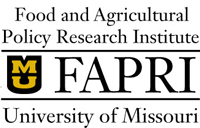A new study done by the University of Missouri’s Food and Agricultural Policy Research Institute (FAPRI) looked at the impact of eleven different policy scenarios for ethanol on the market, food and ethanol prices, and overall farm income.
 Among the options considered was increasing the allowable blend of ethanol in gasoline to 15 percent, which the study found would result in slightly higher corn and ethanol prices and an overall increase in net farm income. “Allowing 15% ethanol blends increases ethanol use and average corn prices, but the effects are modest,” the report states. “Such intermediate blends expand the potential ethanol market and raise corn prices by an average of 1.1%.”
Among the options considered was increasing the allowable blend of ethanol in gasoline to 15 percent, which the study found would result in slightly higher corn and ethanol prices and an overall increase in net farm income. “Allowing 15% ethanol blends increases ethanol use and average corn prices, but the effects are modest,” the report states. “Such intermediate blends expand the potential ethanol market and raise corn prices by an average of 1.1%.”
The study also found that allowing the ethanol tax credit or ethanol tariff to expire would likely reduce domestic ethanol production and corn prices, as would reducing the Renewable Fuels Standard.
Possibly the most important conclusion of the study is that basically any model that predicts price and production behavior based on policy is dependent on other factors that cannot be controlled. “The relative importance of different ethanol support policies depends on the price of oil, the weather, and other market circumstances,” it states.

